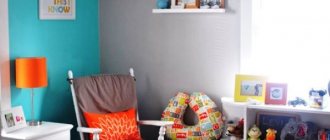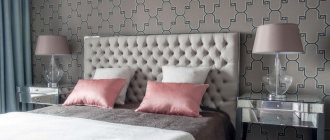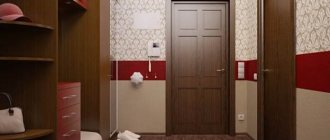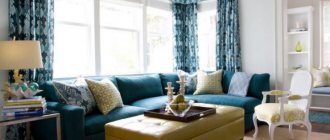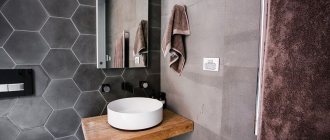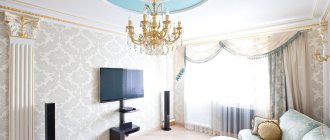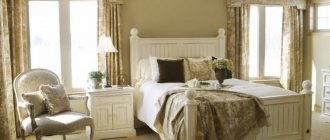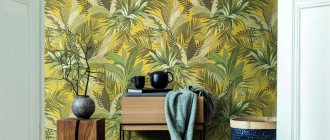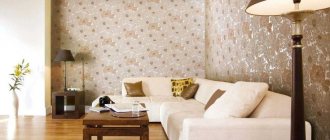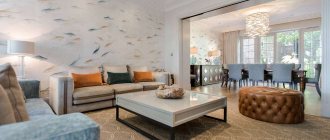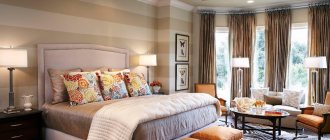To choose the right wallpaper for the walls in such an interior, answer the question of what you expect from the updated design.
Harmonious shades and appropriate patterns on the walls will create both a soothing and festive atmosphere.
In addition to the aesthetic properties, pay attention to the practical characteristics of the wallpaper. Although there is no threat to the loss of quality of wall materials in the interior of the hall, it is better that they retain their original appearance for as long as possible.
Prepare for finishing work by deciding which wallpaper to choose for the room with a photo, and we, in turn, will reveal the secrets of how to make such an interior practical and cozy for everyone.
Modern wallpapers, what are they?
Wallpaper for a living room should convey a certain message, especially since a huge selection of materials of various textures and colors contributes to this.
- Paper wallpaper has long moved from the budget niche to the premium segment. Foreign manufacturers offer interesting options with modern prints; plant themes, herbariums, and complex geometric patterns are in fashion. A special place is occupied by paper wallpaper with voluminous figured embossing and photo wallpaper with a 3D effect.
- Non-woven wallpaper allows you to create an ideal surface with a complex pattern on which you will never find seams, since the wallpaper is glued end to end. This type of wallpaper is as environmentally friendly and safe as paper wallpaper. They allow air and moisture to pass through, maintaining a healthy microclimate in the room.
- Textile, metallized, glass wallpaper, liquid wallpaper are new materials that allow you to create a unique interior that emphasizes the individuality of the owners of the house.
Drawing
Both clothing design and wallpaper design are subject to fashion trends, but trends change less often. Fashionable wallpaper for a living room in a modern interior is an abstract pattern, complex interweaving of lines that form an intricate pattern.
For interiors in a classic style - these are monograms on a dark contrasting background or a floral pattern. For a room with an eco-friendly interior, wallpaper with images of trees, exotic birds on the branches, stylized flowers, buds and leaves is suitable.
Fashionable wallpaper for the hall in 2022 often features images of a fern or palm tree leaf, and ornaments with Turkish motifs. Photo wallpapers with macro photography and wallpapers that imitate brickwork remain in fashion.
Color solution
The choice of wallpaper color in the living room depends on many factors: the size of the room, lighting, and interior style. You need to understand that the smaller the area of the room, the lighter shades should be used in its decoration. Dark wallpaper will visually make it appear more cramped. Wallpaper for the living room in an apartment can be of a neutral color to create a noble background for the decor. These are powdery shades, coral, apricot, peach. A room in warm colors will look cozy and fresh.
When thinking about how to choose wallpaper for your living room, give preference to classic color combinations that look very noble. Milky, ivory, milk and dark chocolate colors are ideally combined with furniture made of natural wood, and the colors of terracotta, ocher, and brick can be used as accents.
Light wallpaper for the living room is the best option. A room in light colors seems more spacious, it gives your eyes a rest. Fans of the Scandinavian style, which has become very popular in recent years, prefer to decorate the room with white wallpaper. This design, despite its apparent simplicity, allows you to create modern interiors. And the use of an accent color in the decor: pieces of furniture, accessories, textiles adds vibrant colors, and the interior does not at all resemble a hospital ward.
Gray wallpaper in the hall creates an atmosphere of rigor and order. It is good to welcome important guests in such a room. It is also suitable for the apartment of a modern successful man. The coolness that gray creates can be diluted with plum or pink; this combination looks extraordinary and fresh.
Matching style
Selected wallpaper without a creative approach will not last long. In order for the walls to harmoniously combine with the interior, you need to adhere to a certain style. There are several types of design and each of them has pros and cons.
Classic
Suitable for conservative people, does not contain flashy elements, and is consistent in color. Its shades are beige and green. Wallpaper for this style is chosen to be plain, with a non-uniform surface and with a modest pattern.
Vintage retro
The best option for fans of adventure. This design is suitable for textile wall decoration using muted shades against the backdrop of a bright composition of sets.
Empire style
It is often used in spacious rooms where it is possible to recreate the imperial style. It is best to choose a pattern for decoration in stripes or damask. Colors are kept in soft light tones and in strict combinations.
Victorian style
Wall decoration with fabrics or wallpaper. The design contains no more than two colors - brown with a warm highlight and red. The ornament is based on flora, fauna or geometric shapes.
Country
This style is suitable for people who follow rustic traditions. The main shades in the design are light highlights and simple patterns in the form of flowers, stripes or geometric shapes. The main thing in country music is simplicity and naturalness.
Ethnics
The style is intended for fans of the avant-garde who prefer something extraordinary. Vinyl wallpaper with bright colors and intricate patterns is suitable for the living room.
Modern
The most popular direction in which pastel colors are used with the use of abstract patterns.
Oriental decor
The style comes from the land of the rising sun (Japan). The walls are covered with silk-screen printing. The pattern is based on hieroglyphs or birds.
Loft
A destination for connoisseurs of the Middle Ages. The interior adheres to antiquity. Fiberglass wallpaper will be the best option for decorating a living room.
Wallpaper combination two colors
Modern trends in interior design suggest combining several colors and different textures in the decor. The main rule is to combine no more than three or four colors. You can choose plain wallpaper of different shades, contrasting or close to each other, or try to combine monochrome with a pattern, this is much more difficult.
Note!
Glass wallpaper - what is it? Pros and cons, types, features, characteristics, photos of design and combinations in the interior
Plain wallpaper - 150 photos of modern design. Rules for choosing and combining wallpaper in the interior: kitchen, bedroom, living room, hallway
Wallpaper framed on the wall in the interior: photos of original design and beautiful decor
How to choose wallpaper for a living room in two colors? — choose win-win pairs: gray-blue and dark blue, bottle green and dark brown, chocolate and ivory, mint and sand.
When decorating a hall with wallpaper of two colors, one color is usually chosen as the main one, and the second, as an additional color, is used to decorate a niche or protruding wall elements, columns, crossbars. Stripes of contrasting color, which are located along the edges of the wall, visually make the ceiling higher and the space more collected.
Combining two types of wallpaper: eight basic gluing techniques
It is important to understand that the main condition for creating a comfortable interior is a harmonious combination of all its components, including wallpaper. They serve as a background or, figuratively speaking, as a canvas on which the entire interior landscape is painted.
Therefore, before going to the store to buy them, it would not be superfluous to carefully consider successful examples of the design of combined wallpaper of two types for a bedroom or living room in the photos of finished interiors. Analyze them, mentally imagine how good they will look in the decor of your room and, based on this, choose the most suitable option for yourself.
Despite the fact that there are a lot of methods for gluing combined wallpaper and each designer brings some personal ideas to them, eight main technical techniques can be roughly identified from them.
- Walls of different colors. One or two vertical planes are completely covered with each type of wallpaper. If one wall is pasted over, it is made accent - darker or brighter. Since walls decorated with dark wallpaper look narrower, while walls decorated with light wallpaper look wider, this method helps to visually adjust the perimeter of the room.
- Vertical stripes. Wallpaper of two types is cut into strips, the length of which is equal to the height of the wall and, when gluing, they alternate along the entire perimeter of the room in any order. The most popular alternation is when stripes of different colors follow one another. This technique helps to visually raise the ceilings. The visual effect of high ceilings can be enhanced even further by alternating two strips of wallpaper in neutral colors and one in a rich dark color.
- Horizontal stripes. Horizontal stripes can also be pasted, alternating in different sequences. To make the joints look aesthetically pleasing, you need to select wallpaper of the same thickness. This technique makes the walls seem wider and the ceilings lower, so it is better not to use it in rooms with low ceilings. This drawback will not be so noticeable if the stripes of wallpaper of neutral colors are made wider than those of wallpaper of rich and bright colors.
- Horizontal wall division. The walls along the entire perimeter at a height of 120-140 cm are divided into two horizontal zones. Wallpaper is glued in the traditional vertical way. The horizontal joints are decorated with polyurethane molding, decorative strip or paper border (if the thickness of the panels is the same). This method allows you to aesthetically combine wallpaper with different textures. A classic example of this design is striped wallpaper at the bottom and with a floral pattern at the top. Since any horizontal division visually shortens the height of the walls, in rooms with low ceilings it is better to cover the upper zone with light-colored wallpaper.
- Dividing walls diagonally. This method is not very common, however, it is original and quite worthy of mention. It is also good because it visually does not affect the geometric parameters of the room in any way and is suitable in cases where they completely suit you. The wallpaper connection line can be made straight, stepped or wavy. Wallpaper with this gluing technique must be chosen with the same texture, since it will not be possible to beautifully and aesthetically hide the place where they meet under the molding.
- Wallpaper inserts. Inserts made of dense textured material with an interesting pattern in contrasting color to the main wallpaper look best. If they are small, first decorate the entire wall with background wallpaper, preferably plain and with a smooth surface. And only after that pieces of contrasting fabrics with an interesting pattern are glued onto them. If the inserts are large, both types of wallpaper are glued end to end. To give this design completeness, contrasting pieces are framed with molding or decorative slats.
- Patchwork gluing. The patchwork design on the walls looks very nice, but it is not formal enough for the hall. Therefore, almost all photos of interiors with “patchwork” walls demonstrate how you can beautifully and economically hang wallpaper of two colors in the bedroom. The biggest advantage of this type of pasting is that it is waste-free. It allows you to use the minimum possible number of rolls, does not require adjustment and can be handled by one person. For a patchwork combination, choose types of wallpaper that have at least one common element. For example, wallpaper with the same pattern on a different background or canvases in different shades of the same color. They are cut into rectangles, squares or triangles and glued in any way: end-to-end or overlapping, ordered or chaotic.
- Identification of niches and protrusions. In modern interiors, walls are often decorated with niches or projections made of plasterboard. In the bedroom they are usually located at the head of the bed, and in the living room behind the sofa, fireplace or in the place where the plasma is supposed to be hung. To attract attention to these areas of the wall, emphasis is placed on them, decorating them with wallpaper that contrasts with the main background of the interior.
Basic visual techniques for combining two types of wallpaper of different colors or textures
Having studied the basic techniques for gluing two types of wallpaper on walls, you can move on to the question of how you can aesthetically decorate the interior with canvases of different colors and thicknesses. The main techniques for combining wallpapers that differ in these characteristics are as follows:
- A combination of canvases in different shades of the same color, for example, peach and coral, green and light green, blue and light blue, sand and beige.
- Combining wallpaper with a pattern (stripes, ornaments, floral patterns, monograms) and plain ones.
- Combining wallpaper of different colors. For such a design to be harmonious, you need to choose an active color for one type of wallpaper and a neutral color for another.
- Combination of wallpaper from different materials in one interior. They try to choose wallpapers of different textures, for example with a smooth and foamed surface, in one color (different shades are possible). An emphasis focused only on an interesting texture will be brighter. In addition, by playing on the difference in textures and colors, you can create various effects in the interior of the living room and bedroom that are useful not only from an aesthetic, but also from a practical point of view:
- Hide small defects in rough finishing. To do this, a wall with unevenness and roughness is covered with neutral wallpaper, and the opposite, smooth wall is made an accent wall and decorated in bright, saturated colors.
- Divide the space into zones. The combination of two types of wallpaper is very convenient to highlight certain areas in a multifunctional or overly large room. With their help, you can clearly define the boundaries of each zone without resorting to installing partitions or hanging curtains.
- Correct planning deficiencies. By experimenting with combinations of two types of wallpaper, you can influence the visual perception of the size of the room. For example, a narrow room will be visually expanded by covering the end walls with light wallpaper and the side walls with dark wallpaper. Vertical alternation of dark and light canvases, as mentioned earlier, will visually raise the ceilings. There are many such techniques, and for any room there is always a suitable way to visually adjust its size with wallpaper of different colors.
Metallized wallpaper and glass wallpaper
Metallized wallpaper and glass wallpaper provide even more possibilities for decorating the room. Thanks to a complex technology in which aluminum coating is applied to the base, the wallpaper looks like a mirror, completely covered with a pattern.
Fiberglass wallpaper creates a perfectly flat surface with figured embossing, which can be coated with any paint. This is a very durable type of wallpaper that can withstand 6-8 repeated dyeing cycles. And using the squeegee painting technique, you can effectively highlight the texture of the wallpaper.
Textile wallpaper for the hall
And if we are talking about textiles, then when decorating a living room, it is worth considering the option of textile wallpaper. Even though their price is quite high, they are worth the money. Textile wallpaper is a covering of several layers, the top of which is fabric.
For classic interiors and baroque style wallpaper, wallpaper with silk-screen printing or jacquard is suitable. For an eco-friendly interior, you can choose wallpaper coated with undyed flax or natural jute. Wallpaper made of natural or artificial felt looks very cozy, especially in the winter cold. For a room in a modern style, synthetic-based wallpaper with a pattern or velvety flock wallpaper is suitable.
Photo examples of successful style
Below you can see samples of wallpaper for living rooms, decorated in different ways.
Cork wallpaper and bamboo wallpaper
When choosing wallpaper for a living room in a private home, you should pay attention to coverings made from natural materials: cork, bamboo - such wallpaper looks very organic, natural wood cannot be compared with anything, it creates a special, soulful atmosphere.
The combination of wallpaper and wood panels looks great in the large living room of a private house.
Tips from designers
Decorating a room is a process that should be taken seriously. And in order for the living room to please you with the final result, you should listen to the little tricks of the experts.
When choosing wallpaper, you should evaluate not only the practicality of the material, but also the tint structure.
The influence of colors on the human psyche:
- Green – promotes relaxation and does not burden visual perception.
- Blue – lowers blood pressure, suitable for phlegmatic people.
- Black – focuses attention on something.
- White is the color of peace. It is used to visually increase the area.
- Red – conducive to energy. If you have too much, you may feel a sense of anxiety.
- Violet has a depressing effect on the psyche.
- Yellow – reduces phobias and has an optimistic effect.
- Gray is a universal color that goes well with any shade.
It is not recommended to choose the following wallpaper combinations: black with yellow, blue with white, yellow with red and white with orange.
Wallpapering in the living room
Wallpaper is a material that is quite easy to use. Quite often, wallpapering is done on your own, without turning to professionals for help. If you are thinking about how to hang wallpaper in the living room yourself, first of all evaluate your capabilities and compare them with the choice of material.
Paper wallpaper usually comes in narrow rolls, which are coated with glue and glued to the wall. With a little skill, gluing can be done by one person. Acrylic wallpaper is the same as paper wallpaper, but with a denser top layer. Gluing them is just as easy, you just need a different glue.
Non-woven and vinyl wallpapers, on the one hand, are good because the roll can be cut directly along the baseboard, since the glue is applied not to the surface of the wallpaper, but to the wall. But, on the other hand, gluing them is quite difficult, the material is heavy and requires a lot of effort in smoothing.
Applying liquid wallpaper will not be difficult, but gluing textile wallpaper will require a great level of professionalism.
Before gluing wallpaper, the surface must be carefully prepared. It is necessary to remove all previous coatings, be it old wallpaper or paint. The concrete wall needs to be puttied and a layer of special primer applied. Of course, a wall for wallpaper may not be as ideal as a surface for painting, but still the main irregularities, roughness and dips need to be removed.
Little tricks
When buying wallpaper with a pattern, you need to pay attention to the size of the repeat - a repeating fragment of the pattern. If it is large enough, you need to have a reserve, because some of the wallpaper will end up as scraps.
Before purchasing, you need to carefully calculate the number of rolls needed. The color of the same wallpaper differs slightly in different batches. And if, when pasting a room, one piece is missing, there is a risk that it will always differ in shade from the main mass. Corresponding types of glue have been developed for different types of wallpaper; you need to take this into account when purchasing.
Special plastic spatulas, which in professional language are called “shark fin”, are very convenient for smoothing wallpaper. And to apply glue to the wall, it is better to use a roller rather than a brush.
Tips for visually changing the dimensions of a room
If the room is small, then you should choose light shades. This optical illusion will increase the space and make it appear more spacious. Photo wallpapers are not recommended for use in such rooms, as they will complicate the perception. It is advisable to choose wall coverings that are plain or textured with small ornaments.
If the living room area is large, you can give free rein to your imagination and experiment with dark colors. Warm shades from milk to chocolate are suitable for a comfortable atmosphere.
A nuance when choosing wallpaper is that the existing furniture should be combined with the selected wall coverings. For example, against the background of a bright set, the decoration of vertical lines should not be variegated. If the walls dominate, then choose a sideboard in a warm shade.
To select the correct color scheme, designers have developed auxiliary spectra and tables that allow you to correctly assemble shades for the hall and, using them, create a beautiful and unique interior.
